Browse: Home / Solar Sciences

By P Gosselin on 18. May 2024
Jet Stream Blocking and U.S. Heat Wave Index By Kyoji Kimoto In 1962, Japanese meteorologist Hirohide Saito found the instability of summer temperature of Hokkaido (northern part of Japan) during the solar minimum as follows: Fig.1 Instability of summer temperature (white circle) of Hokkaido In 1967 Japanese meteorologist Junkichi Nemoto published the following graph, below, […]
Posted in Drought and Deserts, Solar Sciences |
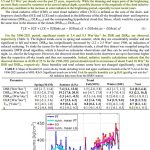
By Kenneth Richard on 29. April 2024
Across Europe there has been a downward trend in cloud and aerosol albedo over the last 40 years, allowing more solar radiation to reach the surface. This “brightening” effect thus explains recent warming. A new study (Wacker et al., 2024) from a “testbed site” in Germany reports total and direct shortwave (SW) radiation forcing rose […]
Posted in Cloud Climate Influence, Solar Sciences |
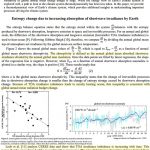
By Kenneth Richard on 14. March 2024
The warming of the oceans since the turn of the century can easily be explained by the increasing trend in absorbed solar radiation. Earth’s energy imbalance was determined to be +0.6 W/m² during the first decade of the 21st century (Stephens et al., 2012) using satellite observations. However, uncertainty in this positive imbalance value is […]
Posted in Solar Sciences |
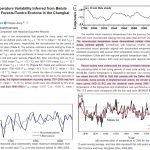
By Kenneth Richard on 4. March 2024
The warmest 50-year period in northeastern China occurred from 1844-1893. Li et al., 2024 “Compared with single years, in general, high or low temperatures that persist for many years will more significantly affect the growth of trees [30]. When we defined years with T12-1 ≥ −10.73 °C (Mean + 1σ) and T12-1 ≤ −12.61 °C […]
Posted in Paleo-climatology, Solar Sciences |
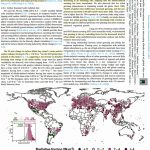
By Kenneth Richard on 12. February 2024
The globe’s cities are warming primarily due to declining albedo, not CO2 radiative forcing. According to a comprehensive new study published in Remote Sensing of Environment, CO2 fertilization has led to an enhanced greening trend in 72.6% of cities across the world since 1985, accelerating to 89.2% since 2001. Per the authors, this greening trend […]
Posted in CO2 Greens the Earth, Solar Sciences |
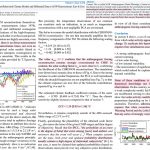
By Kenneth Richard on 4. January 2024
AGW proponents use subjective forcing models and unmeasured estimates of past solar activity to claim humans drive warming. A scientist’s (Larminat, 2023) reassessment finds the Sun can drive climate, equilibrium climate sensitivity (ECS, 2xCO2 + feedbacks) is 1.14°C, and human forcing is overestimated. Because there have been no direct measurements of solar activity until the […]
Posted in Climate Sensitivity, Solar Sciences |
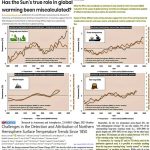
By Kenneth Richard on 5. October 2023
Solar forcing may have a 4 to 7 times greater effect on climate change than current climate models indicate, which may mean modern climate change is predominantly natural rather than anthropogenic. Anthropogenic global warming (AGW) attribution may be significantly dependent on the choice of dataset. Advocates of AGW may only use Total Solar Irradiance (TSI) […]
Posted in CO2 and GHG, Solar Sciences |
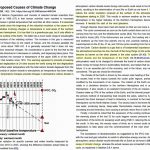
By Kenneth Richard on 28. September 2023
CO2 “only affects a small range of long-wave re-radiation from the surface of the Earth,” and there “seems to be no connection between carbon dioxide and the temperature of the Earth.” − Harris, 2023 New research published in the MDPI journal atmosphere by Dr. Stuart A. Harris asserts past and modern climate changes are natural […]
Posted in Climate Sensitivity, CO2 and GHG, Natural Oceanic Oscillations, Solar Sciences |
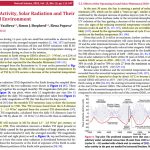
By Kenneth Richard on 22. September 2023
“The first modern GSM1 [Grand Solar Minimum] occurs in 2020 – 2053 with the cycle amplitudes reduction to 80% in cycle 25, to 30% in cycle 26 and to 70% in cycle 27 from the maximum amplitude of cycle 24.” − Zharkova et al., 2023 Per a new study, Earth’s Total Solar Irradiance (TSI) has […]
Posted in Cooling/Temperature, Solar Sciences |
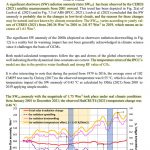
By Kenneth Richard on 7. September 2023
More and more evidence is emerging that the modern warming trends are naturally driven, not anthropogenic. Per CERES observations the surface incident shortwave (SW) radiation anomaly increased by +1.61 W/m² from 2001 to 2019, and +1.75 W/m² from 2001 to 2021 (Ollila, 2023). This SW increase is likely due to natural variations in cloud cover […]
Posted in Cloud Climate Influence, Natural Variability, Solar Sciences
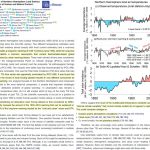
By Kenneth Richard on 4. September 2023
Nearly all of the alleged anthropogenic link to climate change can be removed simply by exchanging and/or replacing biased temperature and solar activity data sets. A new study authored by 37 scientists in the journal Climate finds using rural-only Northern Hemisphere temperature data (i.e., removing artificial, non-climatic urban heat effects) reduces the post-1850 warming trend […]
Posted in Natural Variability, Solar Sciences, Temperature Bias/Urbanization |
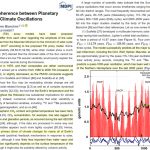
By Kenneth Richard on 24. April 2023
A new study exposes the uncertainty in solar activity reconstructions, but suggests solar models explain climate changes far better than atmospheric CO2 concentrations. Proxy model estimates of the impact of solar variability on climate are highly uncertain. For example, estimations of the increase in solar irradiance over the last 400 years range anywhere from 0.75 […]
Posted in CO2 and GHG, Paleo-climatology, Solar Sciences |














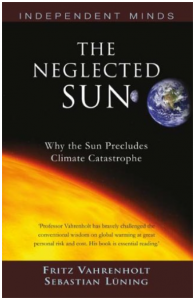


Recent Comments